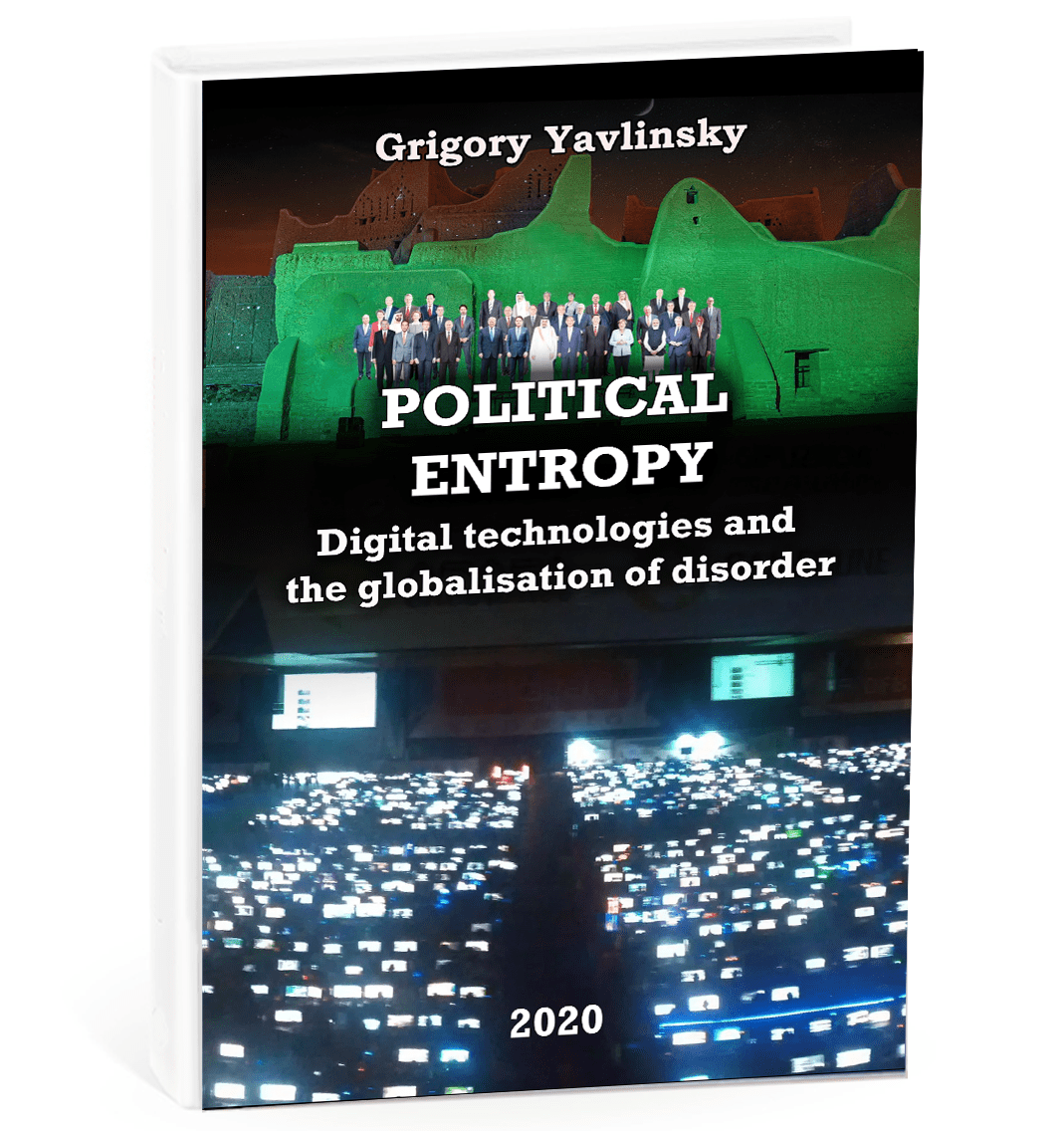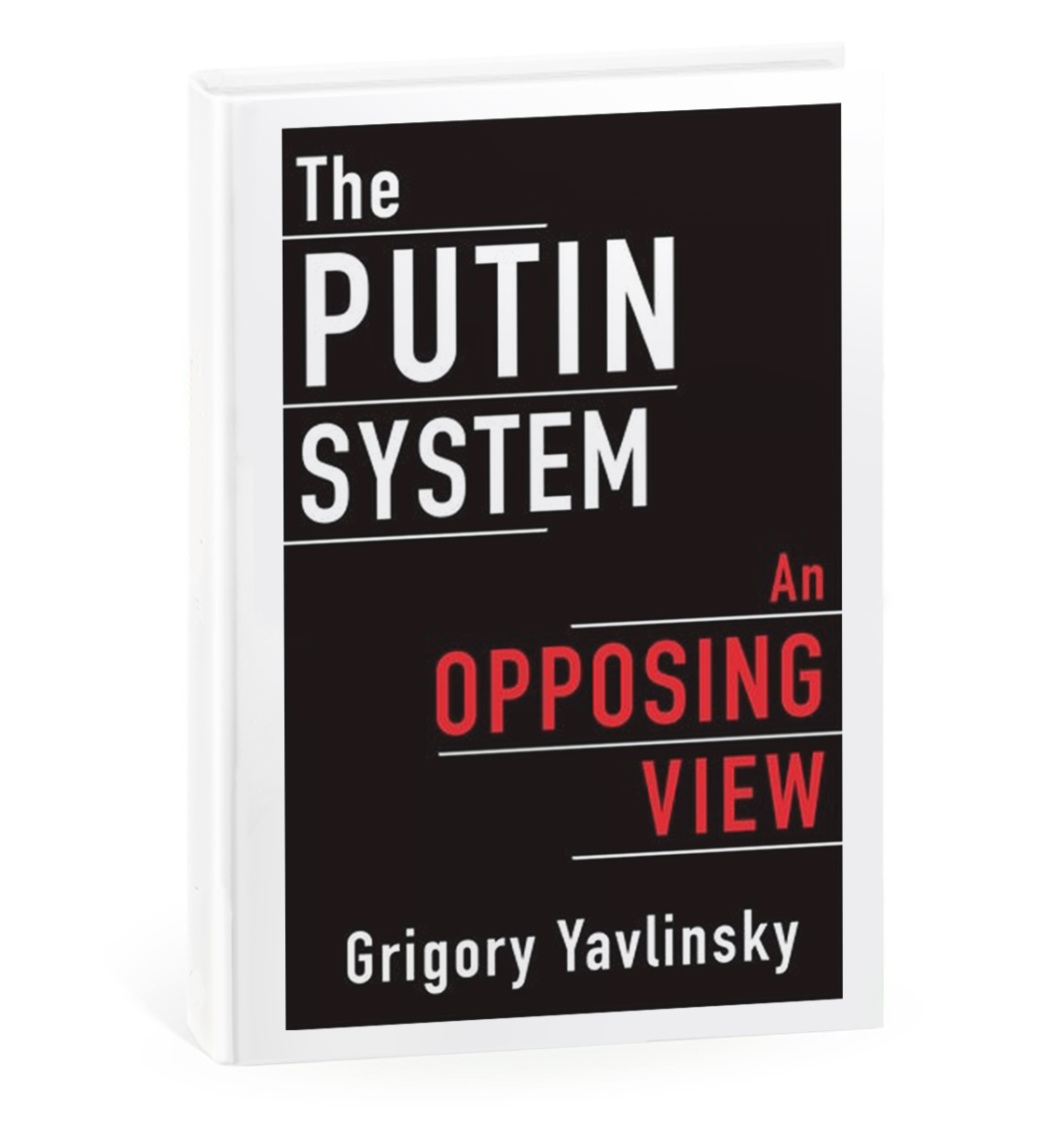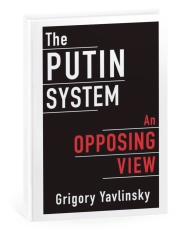At one of the most recent sessions of the Security Council of the Russian Federation, President Putin talked about NATO’s advance, the “militarisation of space” and expansion of the “nuclear missile club”. This led to his key conclusion: the country must expedite the “development of military potential” and the production of new types of weapons.
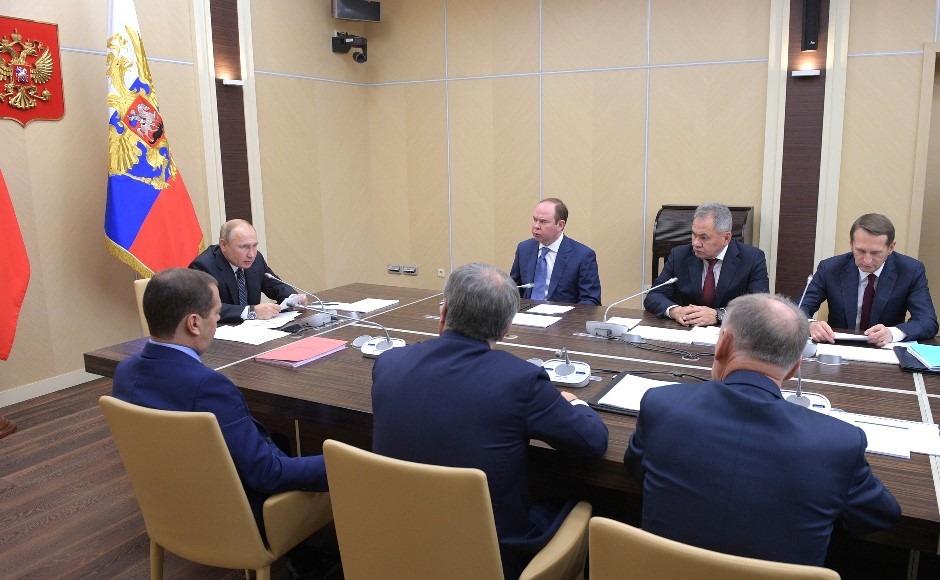
The Security Council of the Russian Federation is responsible for preparing the decisions of the Russian President on issues of protecting the vital interests of society, the individual and the state from the most significant threats. However, the overriding interest of all Russia’s citizens — the need to safeguard and maintain peace — is not discussed at a practical level. Instead our President looks for explanations and reasons and concocts various grounds1The “Nuclear Club” has not expanded since the Democratic People’s Republic of Korea joined in 2006. for an arms race.
Putin is not developing a policy to prevent war — on the contrary, he is preparing for one.
Of course, the Russian President is not the only one to have such an approach in the world. Donald Trump’s isolationism and nationalism have seriously complicated the global context and narrowed the horizons of political thinking. International efforts to maintain peace simply have no role to play here. The threat of a nuclear war at the end of the 20th century was considered the most important issue. Today, however, while this threat is no less ominous, it is portrayed incoherently and obscured politically by ambitions of a different calibre. And as a result the threat of war is becoming more and more likely.
Russia is virtually playing the leading role in this process. Vladimir Putin is doing absolutely nothing to maintain peace. On the contrary, the Russian President is proactively and persistently pleading the case for a full-scale arms race. The tone of the conversation at the meeting of the Security Council is as such nothing new, but rather the direct result and continuation of longstanding exercises in militarist rhetoric. And all this is happening even though the country’s military expenditure ten times lower than the USA and five times lower than China. Meanwhile, the arms race today is already adversely affecting the financing of Russia’s education, health and pensions systems.
UNPRECEDENTED THREAT
Politicians, the military and experts in Russia complain about Americans who no longer want to commit to any treaties and rely more on their own anti-ballistic missiles and nuclear weapons than on a system of international treaties. Recently, however, the populist exploitation of this topic and nuclear brinkmanship represent one of the underlying traits of Russian official policy.
In his policy article before re-election in 2012, Presidential candidate Putin stressed: “We will not reject in any circumstances the potential of strategic deterrence and will strengthen it… As long as the “powder” of strategic nuclear forces created by the immense labour of our fathers and grandfathers remains “dry”, nobody will dare unleash wide-ranging aggression against us”2V.V. Putin Be Strong: Guarantee of National Security for Russia. Russia Today, 20 February 2012. .
Under the veneer of these attractive pre-election metaphors, the country launched a grandiose rearmament programme of all three components of the strategic nuclear forces (including Putin’s promised deployment of 400 new intercontinental ballistic missiles (IBCM) and the construction of eight strategic nuclear submarines3V.V. Putin Be Strong: Guarantee of National Security for Russia. Russia Today, 20 February 2012. ).
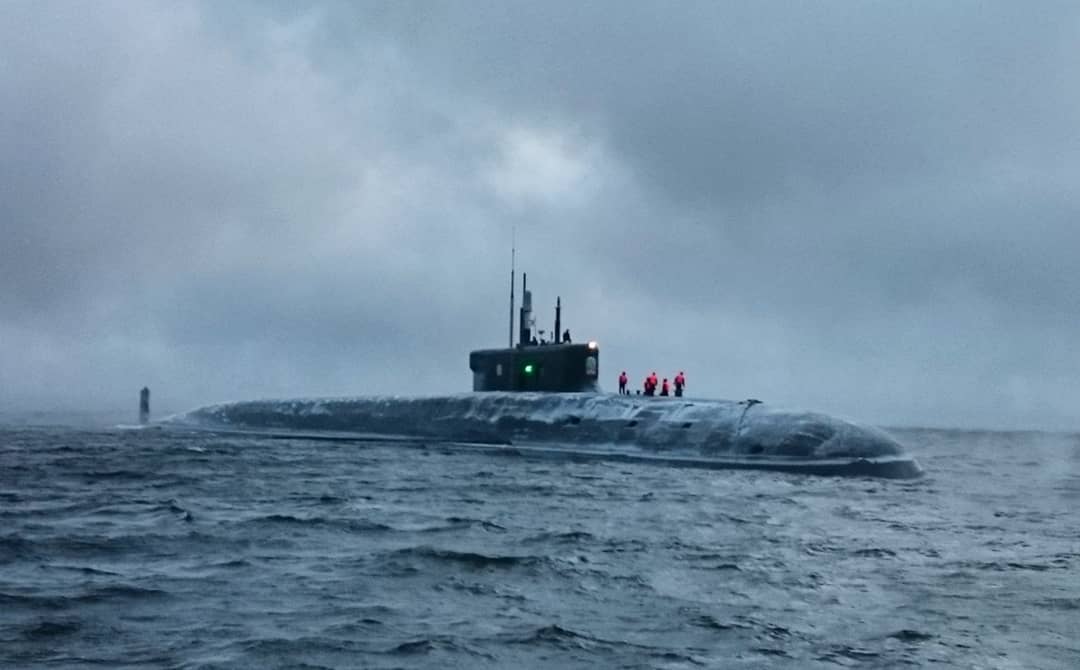
In August 2014, speaking at the pro-Kremlin youth forum Seliger, the Russian President articulated a direct threat: “Our partners, regardless of the situation in their countries, and regardless of the foreign policy concept that they may follow, must understand they would do better to steer clear of us. In the event of a possible armed conflict … I want to remind you that Russia is one of the most powerful nuclear powers. These are not words, these are realities. Moreover, we are strengthening our nuclear deterrence forces”4Speech by Vladimir Putin at the All-Russian Youth Forum Seliger-2014. 29 August 2014.. In March 2015 the documentary “Crimea. The Way Home” caused a considerable stir globally. Asked by a journalist whether the nuclear forces of the Russian Federation were on combat alert during the “Crimean Spring”, Putin acknowledged: “We were ready to do this”5Vladimir Putin: We acted in the interests of the Russian people and the whole country, The Telegraph, 15 March 2015.
Furthermore, even if one proceeds from the premise that such conversations are merely empty words, and their main goal is to remind counterparties that they are dealing with a nuclear power, the frequency of the mentions of nuclear weapons in the speeches of Russia’s leadership on acute political issues and the context of such statements is extremely indicative. They are influencing thinking and constantly shifting the limits of the possible.
Speaking in October 2018 in Sochi, President Putin unexpectedly formulated the central part of Russia’s defence doctrine as follows: “<…> There is no pre-emptive strike in our concept on the use of nuclear weapons. And I ask everyone present here and everyone who will subsequently analyse my every word and use them in some way or other in their own narrative, to bear this in mind: our concept of using nuclear weapons does not permit a preventive strike. Our concept is a retaliatory counter-strike. <…> This means that we are ready and will only use a nuclear weapon once we have made sure that anyone, any potential aggressor, is inflicting a strike on Russia, on our territory. I will not be telling you a secret when I say that we have created a system, and that we will upgrade the system constantly, it needs to be improved — our BMEWS — ballistic missile early warning system. In other words, this system documents globally the launches of strategic rockets from the World Ocean and the territory of the launch. This is the first thing. Secondly, it determines the flight trajectory. Thirdly, the impact area of the warheads of a nuclear weapon. And when we are convinced (and this all happens over several seconds) that the attack is heading for Russia, it is only at this moment that we will make a retaliatory strike. <…> It goes without saying that this will be a global disaster, but let me repeat: We cannot initiate this disaster, because we don’t have a pre-emptive strike. <…> The aggressor must all the same know that vengeance is inevitable, and that it will be destroyed. Meanwhile we are the victims of aggression, and like martyrs we will end up in heaven, while they will simply kick the bucket, because they won’t even have time to repent”6Speech by Vladimir Putin at the meeting of the Valdai International Discussion Club, 27 October 2018.
This concept has been known for a long time. It means that the country’s political leadership needs to adopt a decision on the end of the world within four-five minutes – based on contradictory information from the military, in a state of stress and under significant psychological pressure. At the same time, there have been numerous examples in history of false alarms transmitted from early warning satellites, and the erroneous interpretation of information obtained from surface radars. So far this has happened in peace time. However, what will happen if the mistake occurs during a crisis or even an incipient local military conflict? Furthermore, early warning systems may already become in the near future the target of an attack of anti-satellite systems or cyber diversions.
It is worth noting here that major investments are being made today in such expensive high-survival systems as submarines with ballistic missiles and mobile land-based intercontinental ballistic missiles. These systems are intended primarily for a so-called “second strike”, in other words, they geared to a measured response when you no longer have any doubts that the you are under attack following the explosion of the enemy’s nuclear warheads on your territory, you no longer have any doubts that you are under attack. In this case, it is highly likely that silo-based missiles will be knocked out, but you will still have mobile ground launchers, missiles on submarines and airborne bombers (in total at least 400-500 warheads), not to mention operational-tactical nuclear missiles (approximately 2,000 warheads) aimed at Europe and Asia.
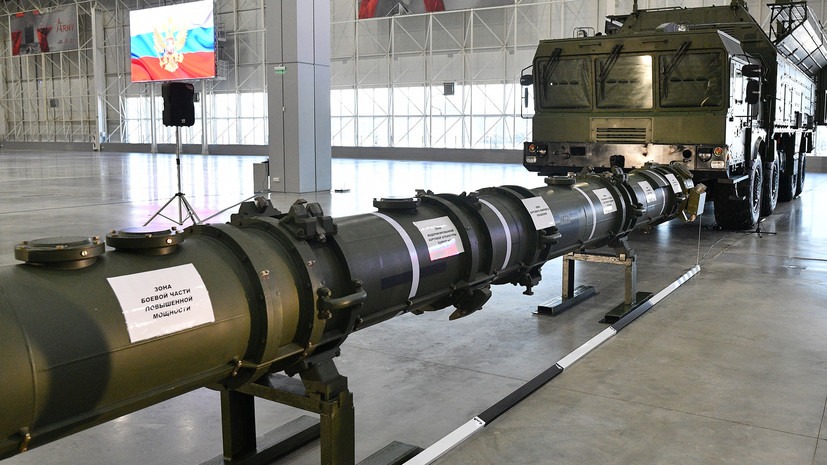
It is highly likely that after the renunciation of the Intermediate-Range Nuclear Forces Treaty (INF Treaty) and in response to the Russian missiles 9М729 —the missiles which led to the accusations from the West that accused Russia of violating this treaty — America will start deploying its own new medium-range missiles in NATO countries in the immediate proximity of Russia. Europe has enthusiasts that are more than ready to accommodate NATO’s arsenal: first and foremost, Poland, Romania and the Baltic countries. The flight time of a ballistic missile from Estonia and Latvia to Moscow is four-five minutes. This will create an unprecedented threat to our security: a hostile country could inflict both a decapitation strike and first strike on Russia. Against this background, ideas on inflicting a pre-emptive strike are being articulated more and more frequently both by hostile countries and Russia7See the interview of Colonel General V.I. Esin, who said: “If the Americans actually start deploying their missiles in Europe, we will have no other option than to repudiate the retaliatory counter-strike policy and move to a pre-emptive strike doctrine”. Weekly Zvezda. 9 November 2018. In the case of America, this might involve the creation of upgraded versions of the Pershing-2 systems, with manoeuvrable hypersonic warheads (evidently included in a R&D work programme with approximately USD 60 million in budget funding). By virtue of the short flight time or special trajectory of such missiles (including hypersonic systems), this will undermine the Russian concept of a retaliatory counter strike and force Russia at vast cost to enhance its nuclear forces and management information systems. The USA is ready for the arms race, already factoring in the newest Russian programmes (Sarmat heavy intercontinental ballistic missiles, Avangard hypersonic systems, Poseidon long-distance nuclear torpedoes or the inter-continental nuclear-armed cruise missile Burevestnik) disclosed in the Presidential Address to the Federal Assembly dated 1 March 2018. Regardless of the fate of the INF Treaty, the USA plans to deploy nuclear arms with lower-capacity warheads to carry out “limited strikes”, and then from the mid-2020s commence a full upgrade of their strategic triad based financing at a cost of over USD 1 trillion for the deployment of new systems to replace the current intercontinental ballistic missiles, submarine-launched ballistic missiles and heavy bombers.. That is why any acute political crisis involving Russia could have the most serious consequences. The situation is rapidly developing in this direction.
However, this topic is not even discussed in Russian society.
“CROCODILE TEARS”: THE BLAME GAME
As the new year begins, the risk of a dangerous outcome is gaining momentum. One key practical result is the destruction of the INF Treaty.
Concerns about the collapse of the “architecture of the arms control system” are expressed today in Russia. Such a statement was articulated by the Director of the Foreign Intelligence Agency of Russia and a similar comment was penned by the Secretary of the Security Council of the Russian Federation. President Putin also expressed a similar view.
However, none of this happened out of the blue. And the USA is definitely not entirely to blame. Over the past decade the benefits of the INF Treaty have been undermined on a regular basis perceived by Russia’s regime8Speech and discussion at the Munich Security Conference, 10 February 2007, Munich. See D. Litovkin. Adequate Iskander, Izvestiya. 21 February 2007. and has been explicitly rejected by a number of representatives of the military establishment. The official attitude to the INF Treaty is expressed most demonstratively by its absence from the list of arms control treaties honoured by Russia in the publication “Foreign Policy Concept” dated 20169Foreign Policy Concept of the Russian Federation (approved by Russian President Vladimir Putin on 30 November 2016), section 27..
And this should come as no surprise, as Vladimir Putin himself is the main advocate for repudiation of the INF Treaty. Speaking at a meeting of the board of the Ministry of Defence in December 2018, the Russian President declared that the conclusion of the INF Treaty in 1987 represented for the USSR “de facto unilateral disarmament”, and “only God knows” why the leadership of the country did this”10Putin based his assessment on information that at the time of the signing of the treaty the USA had medium-range air-launched and sea-launched cruise missiles, whereas the USSR only had a land-based system (ground-launched cruise missile) which was also prohibited by the treaty. In actual fact, this is the reverse of the truth: starting from 1983-1984 the S-10 Granat Soviet sea-based medium-range nuclear cruise missiles and X-55 air-launched cruise missiles Х-55 had been introduced into service, whereas the ground-based system (RK-55 Relief) had still not become operational and had been placed in storage (in total 80) by the time of the signing of the INF Treaty. Meanwhile the USA had by this time already deployed in Western Europe 320 such systems (BGM-109G) that they subsequently destroyed based on the terms and conditions of the treaty. Even though the USSR liquidated 1,846 different types of missiles, neither one could have reached US soil, therefore the treaty did not consolidate point blank the security of the United States, but only eliminated the nuclear threat for their NATO allies and US bases in Europe and Asia. For their part, the United States destroyed 846 medium-range nuclear missiles, furthermore all these missiles could inflict a strike with a short flight time or at low trajectories, lay waste to the entire European part of the USSR, and also destroy the protected underground command centres of the military political leadership. Therefore the INF Treaty became de facto the first treaty where the USA reduced significantly its strategic offensive weapons (by almost 1,000 warheads and carriers)..
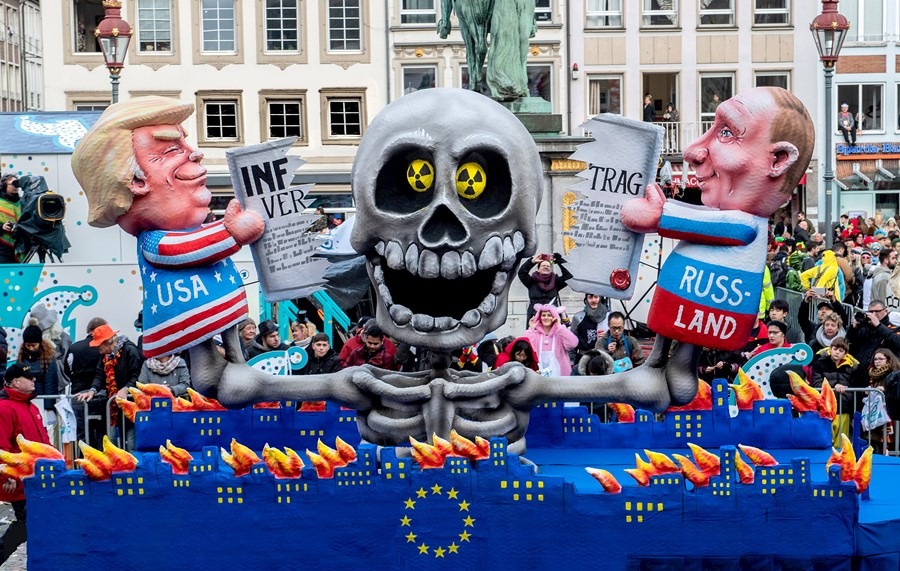
The President’s statement was no accident. Back in 2006-2007 Russian political and military officials had already started talking about possible withdrawal from the treaty.
In his Munich speech in February 2007 Putin cited the creation of medium-range missiles by a number of third countries at a time when Russia and the USA had just been prohibited from keeping this class of system11Speech and discussion at the Munich Security Conference, 10 February 2007, Munich.. This was mentioned repeatedly by Sergey Ivanov who was at the time Minister of Defence (after 2012 Ivanov as head of the Presidential Administration would raise the issue of withdrawal from the treaty). In 2007 army general Yury Baluevsky, who was at the time Head of the Joint Staff, attributed Russia’s possible withdrawal from the INF Treaty to US plans to deploy anti-ballistic missiles in Poland and the Czech Republic12See D. Litovkin. Adequate Iskander, Izvestiya. 21 February 2007, I. Safranchuk. Turmoil of the military diplomatic bearings, Nezavisimaya Gazeta 26 February 2007. Based on such an interpretation, Russia did not need medium-range missiles for the containment of third parties, but instead for use against the USA and NATO.
Then Barack Obama became the President of the United States, and in 2009 the new administration cancelled the programme of their Republican predecessors, replacing it with the European Phase Adaptive Approach (EPAA) for the deployment of anti-ballistic missiles. And in 2013 Obama cancelled the fourth stage of this programme, which had evoked the greatest concern in Russia13The fourth stages proposed the deployment of the “advanced” modification of Standard interceptor missiles —SM-3 Block IIB high speed and long range missiles on ships and land bases in Eastern Europe, which might in theory create comparatively greater opportunities to intercept Russian intercontinental ballistic missiles..
However, Russia held that this concession was insufficient. In 2012-2016 Putin rejected all US proposals to extend START III (Strategic Arms Reduction Treaty) after 2021, and to conclude another treaty on a reduction in strategic arms. In summer 2016 Russia displayed no interest in the US proposal to conclude a new treaty on a reduction in the ceiling for warheads from 1,500 to 1,000. Here the Russian party cited the following reasons: the deployment of anti-ballistic missiles in Europe, US high-precision conventional weapons, the expansion of NATO’s military infrastructure. Against the backdrop of the growing threat of a nuclear war, these were not reasons, but rather pretexts aimed at justifying Russia’s persistent desire to do away with the treaty and revamp its nuclear deterrence system after its own fashion.
Consequently, for over ten years the INF Treaty was only subject to relentless criticism in Russia. Russia’s leadership asserted that the country needed such missiles — firstly against third parties, then against the anti-ballistic missiles of third countries, and finally against the anti-ballistic missiles of the USA in Europe and other NATO bases14Speech and discussion at the Munich Security Conference, 10 February 2007, Munich, D. Litovkin. Adequate Iskander, Izvestiya. 21 February 2007, I. Safranchuk. Turmoil of the military diplomatic bearings, Nezavisimaya Gazeta 26 February 2007 . Such a position (expressed first and foremost by President Putin in person) created the necessary context for the termination of the INF Treaty. At a press conference on 20 December 2018 Putin declared that renunciation of the INF Treaty was “very bad”, as it brings mankind to a “dangerous line”. However, in a bid to render any dialogue impossible, the Russian President added: “Let them not subsequently squeak that we are striving for any advantages. <…> The same holds true for the START III Treaty, it expires in 2021. For the time being no negotiations are being conducted on this issue. Nobody is interested, it is not needed, OK, we will survive. We will ensure our security. We know how to do this”15Major press conference given by Vladimir Putin, 20 December 2018.
At the same time, there were chances to save the INF Treaty — if they had not dragged out their political positioning along the principle “you don’t want – and we don’t need”16Figuratively speaking, the positions of the two powers on the major problematic issue of the INF Treaty and the entire structure of controls over nuclear weapons are only 53 centimetres apart — this represents the difference in the length of the launch pod container of the old and new Russian cruise missile. The USA assigns this difference to a larger fuel tank and the extended range of the missile 9М729 beyond what was permitted under the treaty (500 km), while Russia attributes this difference to the larger section of the warhead and control unit. These 53 cm could have been resolved by both sides without any ultimatums – through the approval of the technical specifications of this system (area of the fuel tank) without disclosing military secrets.. If there had been any interest in retaining the INF Treaty, this could have been done within several weeks17In the past similar solutions would be found in the case of more sensitive military technical issues. The general legal norm of the presumption of innocence does not apply to nuclear arms control. A party accused on the basis of facts and figures of violating a treaty must prove that such claims are groundless, in the process also substantiating this stance with facts. This is precisely why the USA cannot simply brush aside claims with verbal assurances, but is instead required to provide Russia with technical proof that Tomahawk cruise missiles cannot be stored in the anti-ballistic missile launchers in Romania and Poland, as they had been on combat ships in Mk-41 universal missile launchers. If there is no such evidence, the missile launchers must be technically modified or dismantled respectively. At the very least, agreement should be reach on the possibility of regular Russian inspections on site with only short advance notice in order to gain assurance that there are no cruise missiles at the anti-ballistic missile bases..
In January 2019 Russia engaged in further propaganda. Foreign experts were shown the containers of the new cruise missile 9М729 Novator for comparison with the previous system 9М728 Iskander18The Ministry of Defence presented a briefing for foreign military attaches, with a presentation of the 9M729 missile of the Iskander-M complex.. However, to all intents and purposes, America held that the display of closed launch containers with inscriptions on pasted forms was not convincing. Deputy Secretary General of NATO Rose Gottemoeller in an interview in October 2019 to Kommersant declared explicitly: “No useful information was presented there”.
It goes without saying that the USA is also to blame for the destruction of the arms control system. Back in December 2001 George W. Bush announced the unilateral withdrawal of the USA from the Anti-Ballistic Missile Treaty (ABM Treaty), which duly happened in 2002. This treaty had remained in effect for three decades and had been an important deterrent in strategic relations between the USSR and the West. To all intents and purposes, the next (current) Republican in the White House is also doing nothing to strengthen global security: Donald Trump’s initiatives are dangerous in many aspects, and disarmament issues are no exception to this rule. Moreover, applying his principle of the minimum possible binding agreements to nuclear disarmament issues, Trump clearly does not factor in the specifics of this issue, the magnitude of the possible consequences and their irreversibility.
The withdrawal of the USA from the INF Treaty creates the threat of a major war in Europe. However, America proceeds from the premise that the country is far harder to reach in the event of a nuclear attack than Russia. Based on similar weapons (whether these are the Calibre seaborne missiles modified for ground-based launch, the Kinzhal aircraft-launched missiles or new hypersonic medium-range missiles), Russia’s response will not undermine the security of the USA, but rather that of their allies in Europe and Asia. Even if Russia were to place medium-range missiles in Kamchatka and Chukotka, it would only be able to target Alaska and some states in America’s north-west, which are not equable in a military and political sense to the European centre of Russia, the Urals and Western Siberia. Today, however, Kremlin proceeds from the premise that the Russian arsenal also includes other weapons which may allegedly reach practically any part of the USA.
Consequently, one is left with the disturbing impression that the President of Russia is wholeheartedly convinced that Russia is surrounded by deadly enemies and that foreign policy is merely a continuation of a war (which has not actually ended), but involving the use of other means. This is the reason why Putin lacked and lacks the political will to maintain peace through disarmament and mutual trust, and is driven only by two goals: to arm the country tooth and nail, and deploy propaganda to hold other people responsible19MacFarquhar N. Russia Shows Off New Cruise Missile and Says It Abides by Landmark Treat. The New York Times. 23 January 2019. In actual fact, this is otherwise known as preparation for war.
HOW CAN DISASTER BE PREVENTED?
Professionals know what needs to be achieved in the next Treaty on the Further Reduction and Limitation of Strategic Offensive Arms: to ensure control over air-based nuclear cruise missiles and the aircraft bombs of heavy bombers, include in the overall ceilings for weapons land-based intercontinental cruise missile and also intercontinental missile glide hypersonic systems, regardless of the type of warhead. Consequently, as a start, restrictions could be placed indirectly on resources that increase the likelihood that nuclear weapons might be used. The new treaty must cover partial orbital intercontinental ballistic missiles and autonomous long-distance submersible vessels. At the same time, it is necessary to approve measures aimed at ensuring the transparency and demarcation of anti-ballistic missile systems into a strategic (global) defence system from intercontinental ballistic missiles, and regional anti-ballistic missile and anti-aircraft defence systems in order to offer safeguards against medium-range and long-range ballistic and cruise missiles. This is required to limit the former and develop the latter. In parallel, negotiations should be started on space weapons, starting with the prohibition of tests of any anti-satellite systems. There should also be a transition to dialogue on the mutual renunciation of any cyberattack tools and methods against the strategic information management systems of each country.
However, it would appear that Russia’s current leadership has no intention of doing anything of this kind. Now Russia is proposing that the USA extend the START III Treaty (which expires in 2021), not for five years, as stipulated in the treaty, but for a shorter period. This is a very weak proposal. Owing to the longstanding political games over issues of life and death, now at the very least some steps will have to be taken in a rush.
If work had been carried out systematically in all previous years on this key issue, with due account of the impending expiry of the current document, if negotiations had been conducted persistently on a new disarmament treaty, then it would have proved far easier to extend the START III Treaty. However, instead of taking such steps, everything was rejected and different terms and conditions were proposed: “anti-ballistic missiles”, NATO expansion, “sanctions”… However, there was no talk about extending the treaty. In general, Russia has engaged in a game of assertiveness. And now senior leadership has woken up, it has been engaging in PR, in a bid to show how bad the Americans are. As if this were the key issue.
So it should come as no surprise that Russian officials now acknowledge that they will not be able to replace the START III Treaty until the current version has expired20See Russia urges U.S. to extend nuclear pact due to expire in 2021, Reuters.
This is due to a number of reasons.
Firstly, the threat of the expiry of the INF Treaty and START III Treaty, and as a result, a new arms race, is so great and relevant that the situation requires in principle new foreign policy approaches and professional modern diplomacy. I am referring here to diplomacy where pride of place is not given to the propaganda-driven camouflage of the leadership’s policies and the “bamboozling” of opponents, but instead a persistent search for mutually advantageous compromises on the most complex issues, including nuclear arms control. However, neither the current political leadership, nor Russian diplomacy are capable of taking any serious action when it comes to this vital issue.
Secondly, Putin is so used to treating nuclear weapons as an attribute of power, as his main argument in any international dispute, that he will in future use corresponding rhetoric to paper over any cracks in Russian foreign policy and maintain his own image. It is highly likely that the Russian authorities consider this to be an effective way of asserting the country’s status as a great power in the absence of any economic successes or improvements in social conditions. However, it is namely the arms race and confrontation with leading countries globally that is dragging the economy downwards.
Thirdly, the militarisation of the domestic political agenda and the atmosphere in the country in general must be taken into account. This is affected on the one hand by the wars where Russia is playing a role and confrontation with the West, and on the other hand by the growing instability of the regime and the infighting between various groupings for the retention/redistribution of resources and power. Rejection of the rhetoric of nuclear supremacy and the path to actual disarmament in this context would be interpreted by rival groups as an inadmissible weakness— immediately people will appear who want to raise the “flag” that has been cast aside.
In these circumstances, the modern Russian state is not all concerned about its overriding duty before the people – to ensure a sustainable peace, prosperity and protect individual rights.
At the same time, security and peace is Russia’s main responsibility. And instead of provoking tension, participating in different dubious international ventures, and virtually threatening everyone with nuclear weapons, Russia’s President should be doing his utmost to maintain peace and sign the necessary documents for this treaty. There is a pressing need to return to negotiations on nuclear arms control as soon as possible. This is the express duty of Putin before the Russian people. This acute need and urgency are attributable to the political myopia and irresponsibility of the current leaders of Russia and America, which means that the nuclear deterrence regime will simply fade away.
America repudiated the 1972 Anti-Ballistic Missile Treaty back in 2002 Recently, Trump reneged on the nuclear deal with Iran. The nuclear programme and missile tests continue in the Democratic People’s Republic of Korea. Russian policy has resulted in termination of the INF Treaty. The Strategic Arms Reduction Treaty signed in 2010 may lose force at the start of 2021 (unless the USA and Russia agree to an extension). This treaty remained the only Russian-American document to limit the number of nuclear warheads and intercontinental ballistic missiles deployed in the two countries, and also stipulate the exchange of data and mutual inspections.
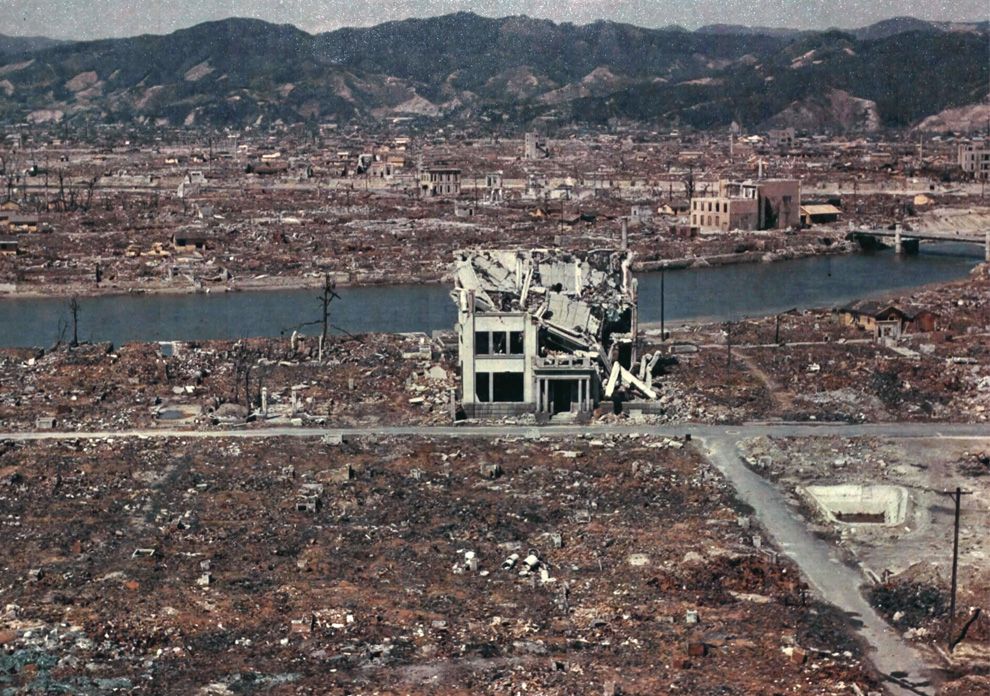
“The United States and Russia are now in a state of strategic instability: an accident or mishap could set off a cataclysm”, — notes the influential journal The Foreign Affairs21Ernest J. Moniz and Sam Nunn, The Return of Doomsday, The Foreign Affairs, 6 August 2019 (authors— Ernest Moniz, former Minister of Energy of the USA in the administration of U President Barack Obama, and Sam Nunn, Senator from Georgia from 1972 to 1997).. “Not since the 1962 Cuban missile crisis has the risk of a U.S. Russian confrontation involving the use of nuclear weapons been as high as it is today. Yet unlike during the Cold War, both sides seem wilfully blind to the peril”. The rejection of arms control will lead the collapse of the Treaty on the Non-Proliferation of Nuclear Weapons, and as result new states will want to obtain a nuclear weapon.
In 2020 75 years will have passed since the bombings of Hiroshima and Nagasaki. It is vital for everyone to recall that this actually means.
***
One of the most authoritative philosophers and sociologists of our age Zygmunt Bauman wrote when assessing the experience of the past and the start of the current century: “It would appear that only a catastrophe enables us to identify and recognise its impending approach (unfortunately, only with hindsight). It is hard to imagine a more disturbing idea”22Zygmunt Bauman, Leonida Donskis. Liquid Evil. Saint Petersburg, Publishing House of Ivan Limbach, 2019, page 91; (Zygmunt Bauman, Leonidas Donskis. Liquid Evil. Polity Press 2016)..
A nuclear disaster will not even leave us with opportunity for belated reflection.
________
The author would like to thank Dr. A. Arbatov for the submitted materials and recommendations expressed during the preparation of the article.
